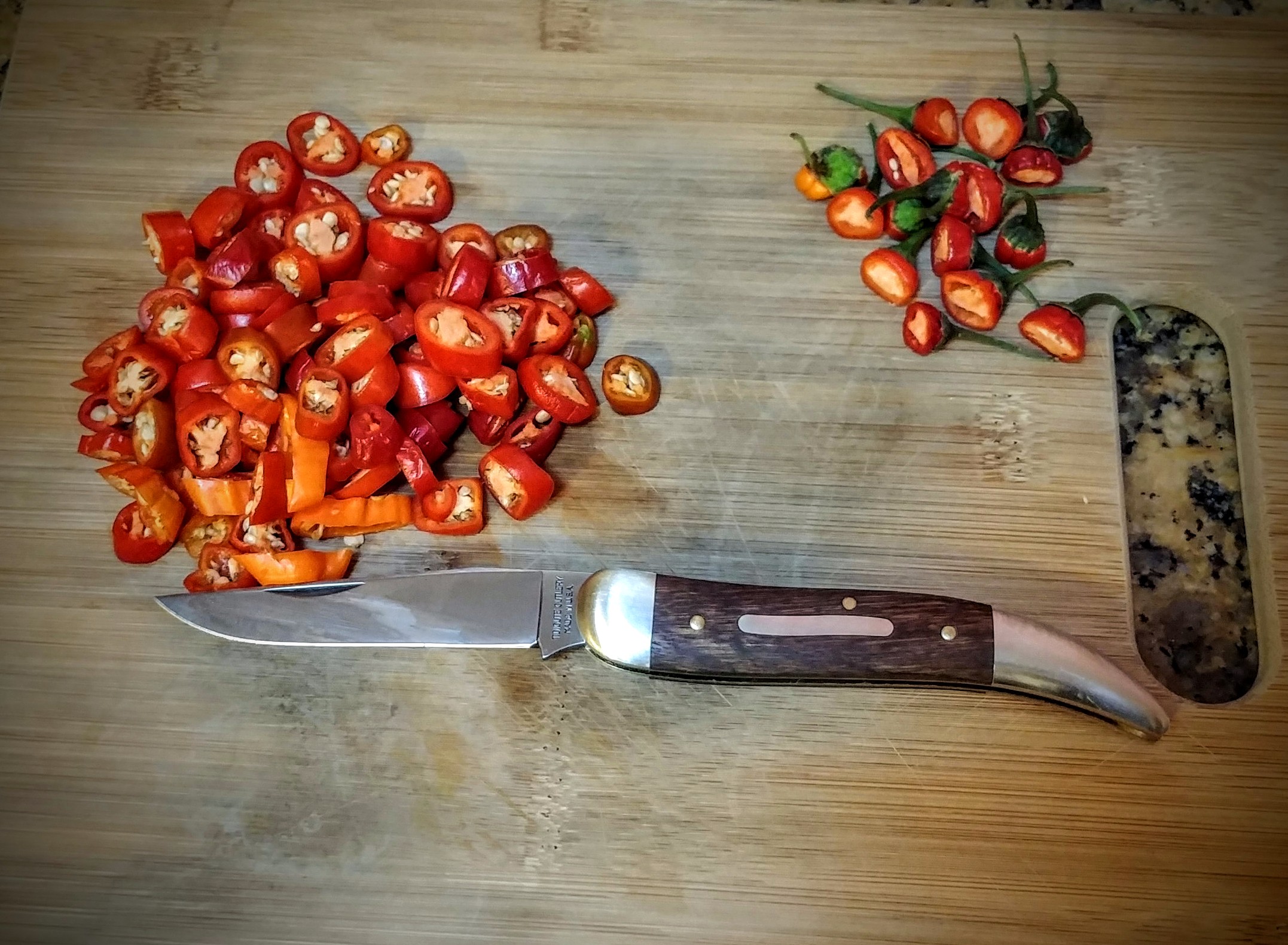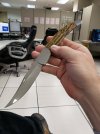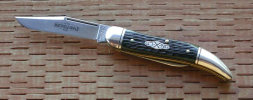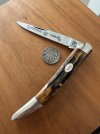Tyson A Wright
Gold Member
- Joined
- Jun 9, 2020
- Messages
- 1,912
I've always liked the looks of toothpicks, but the ones in the hardware store display always had just a few too many fit-and-finish issues for me to buy one. This thread has pushed me over the edge, though. I went looking around online, and found that there are still a handful of brand-new GEC toothpicks at some dealers. (Well, now there's one less.)
I am delighted - this has been my EDC for the last few days, and is likely to be for a long time to come. What surprised me was how ergonomic the grip is - the shape of the spring-side of the grip is remarkably similar to the modern Benchmade Mini-Griptilian. I love barlows and jack knives, but it's hard to imagine going back at this point. The blade shape is great, the grind is excellent, and I'm enjoying putting a patina on it. It is not perfect (what is?) but it's as well-made as any knife I've ever owned.
The blade shape is great, the grind is excellent, and I'm enjoying putting a patina on it. It is not perfect (what is?) but it's as well-made as any knife I've ever owned.
Here it is in it's first use - cutting up the very last of the serrano peppers from our garden.

-Tyson
I am delighted - this has been my EDC for the last few days, and is likely to be for a long time to come. What surprised me was how ergonomic the grip is - the shape of the spring-side of the grip is remarkably similar to the modern Benchmade Mini-Griptilian. I love barlows and jack knives, but it's hard to imagine going back at this point.
Here it is in it's first use - cutting up the very last of the serrano peppers from our garden.

-Tyson







